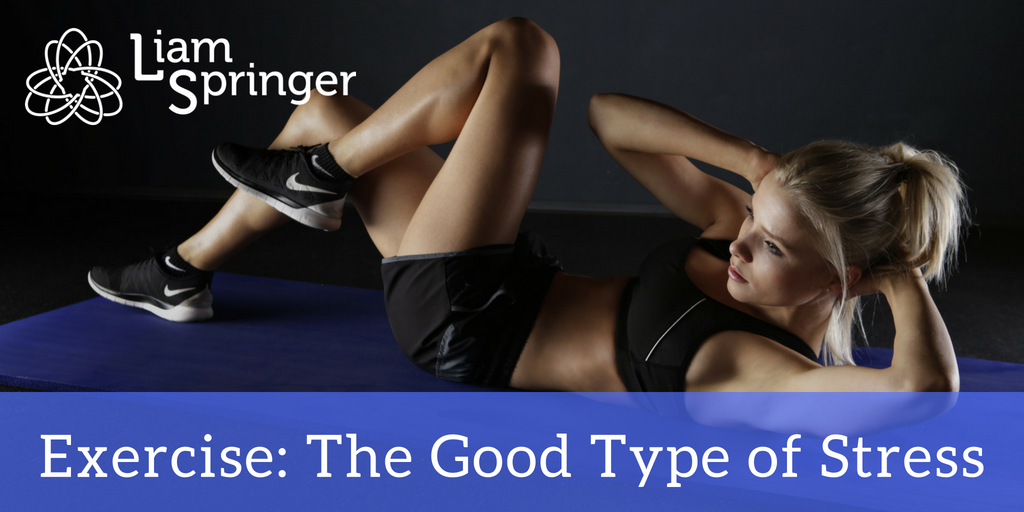Stress is any challenge the body cannot meet without compromising the ideal state of function. When a challenge is not met and appropriate recovery is not possible, the function of the body in a specific region will be developmentally compromised, resulting in what I call artifacts of compromise. But remember: Not all stress is bad. As long as it occurs in the right amount, under the right conditions, stress can have a very positive conditioning influence. Exercise is a great example of the good type of stress.
Exercise is a way of enabling your body’s maintenance, prolonging its use, and perpetuating your experience of life.
Harnessing the Good Type of Stress
In my last post, I discussed the advantages of stress. When the body is faced with a difficult challenge, the stress response activates and enables it to recover its normal state of function—but that’s not all. The body then overcompensates (or super compensates) by stepping up its energy reserves and tissue function so that it will be prepared to meet similar challenges in the future. This explains how the right exercise program can help you harness the power of stress to grow stronger and healthier.
With the right exercise program, you can harness the power of stress for good—using it to help you grow stronger, healthier, and better prepared for future challenges.
Maximizing the Power of Exercise
The blanket statement “exercise is good for you” is not a new concept. You already know this. However, there is more that can be done with regard to engineering and applying exercises to best influence the body in a way that improves tissue quality and function. When engineering a movement, the anatomy, biomechanics, and physiology of the body’s tissues, organs, and systems can be utilized to target specific adaptive responses that improve the body’s function. By applying stress in a particular area (e.g., through stretching)—paying careful attention to the stretching force’s direction, duration, and frequency—you can target specific regions of the body and kickstart the healing process in those areas.
How Does This Work, Exactly?
When the challenge of tension is placed through the fascia, the connective tissue matrix adapts via the interactions between the enzymes, proteins, minerals, and water which move throughout the extracellular space. The mechanical stress exploits the adaptive state of the extracellular connective tissue matrix. This developmental capacity occurs at no cost to the cells contained within the connective tissue of the region. Yet it immediately allows for a vast improvement in terms of energy availability and efficiency.
Carefully applied stress creates a disturbance in the connective tissue matrix and allows the adaptive response to open a door to healing.
So, To Put All of the Above into Context…
By using the brain to coordinate a specific posture and movement, a stretch can be placed on a specific area of the body to influence the artifact(s) of compromise in that region. When the tension is placed in the right direction for the right amount of time, the body will respond by turning over the fluid in that region and allowing the collagen proteins to remodel, thus healing any compromised connective tissue in that area. This is the first step toward truly removing the tissue dysfunction in a particular region.
With the careful stimulation of well-programmed exercise, the chemical environment can turnover, the cells can be better nourished and detoxified, and the process of rehabilitation and improvement can begin. Thus, the intelligent application of stress can be used to improve the function of the body and bring it from a degenerated and vulnerable state to a vital and more stress-resistant state.
Looking for an intelligent exercise program that will help you harness the good type of stress? Go to BTMAStudios.com to learn about the ELDOATM method. Or visit Yoga Source to sign up for classes now!
For more insights on the latest topics in health and nutrition, sign up for my monthly newsletter.







